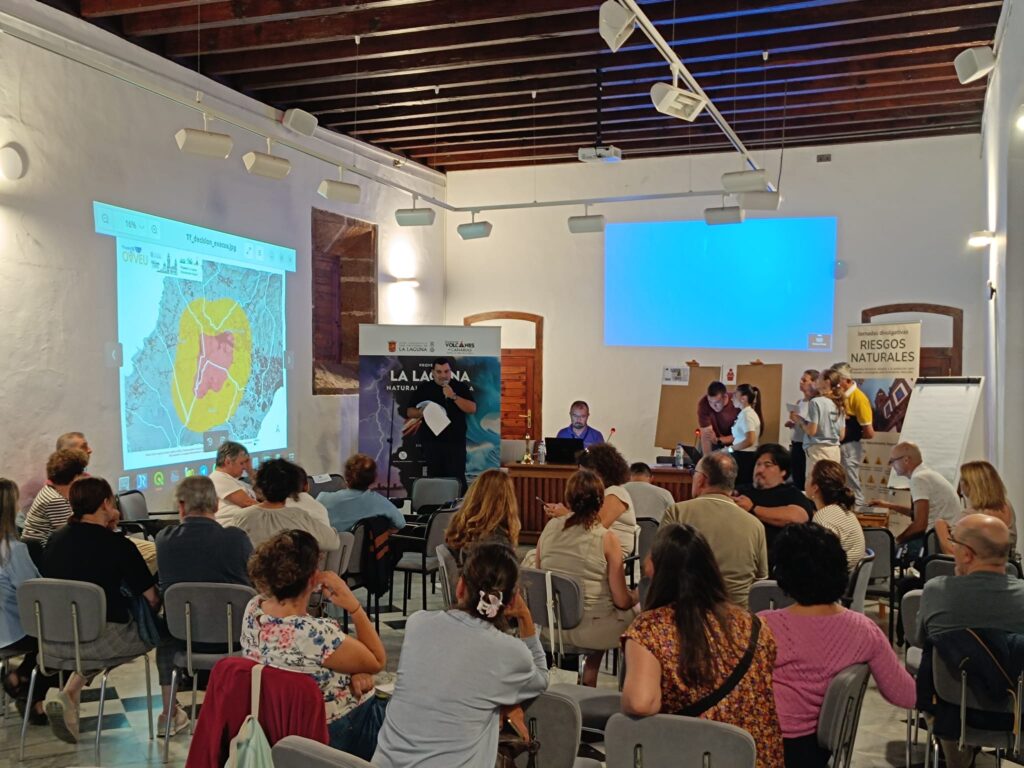
SANTA CRUZ DE TENERIFE, Nov. 14 (EUROPA PRESS) –
The expansion of the Puerto de la Cruz treatment plant will triple the volume of water treatment –from 8,000 to 16,000 cubic meters per day in a first phase and another 8,000 in a second phase– after an investment of 25 million.
The details of the project, which will last for two years, were presented this Monday at a press conference by the general director of the state trading company Aguas de las Cuencas de España (Acuaes), Rosa Cobo, the councilor of the Sustainable Development Area and Fight Against Climate Change of the Cabildo de Tenerife, Javier Rodríguez, the manager of the Insular Water Council, Javier Davara, and the mayor of Puerto de la Cruz, Marco González.
In order for Acuaes to undertake the development of these works, the authorization of the Council of Ministers on August 30 of the modification number 3 of the Direct Management Agreement has been necessary.
As explained by Rosa Cobo, from now on, the Ministry for the Ecological Transition and the Demographic Challenge and the Cabildo de Tenerife must sign an agreement, given that the action is not declared to be of general interest to the State.
The current WWTP is an old facility built in the 1990s that is “clearly insufficient” to collect all the wastewater from the Orotava Valley, according to Acuaes, which points out that the facility includes a biological treatment with microfiltration through membranes, that will allow its subsequent reuse.
Since March 2 of this year, works have already been carried out on the main collectors, especially in La Orotava and Los Realejos, which are the areas with the greatest deficit in the sanitation network, for more than 12.5 million euros. These actions were awarded to the construction joint venture Daltre-Martín Casillas and are scheduled to be completed before December 2023.
This project is added to the set of actions that Acuaes executes in the Arona Este-San Miguel, Tenerife Oeste, Acentejo, Granadilla and Valle de La Orotava Systems by virtue of the agreement signed on July 8, 2020 between the company, the Cabildo and the Tenerife Island Water Council to invest around 200 million euros in sanitation and treatment activities.
134 MILLION ALREADY AWARDED
As reported at the meeting of the Monitoring Committee of the agreement also held this Monday, the volume of work awarded reaches 134 million euros.
Of the five systems in which it is working, the works of the Granadilla system in its entirety are being carried out, the Letrados treatment plant, the Ensenada Pelada wastewater pumping station, mid-level collectors and coastal pumps and drives.
Likewise, work is being done on the sewage system in the West of Tenerife -Guía de Isora treatment plant, ETBAR in the district of San Juan, pumps and discharges from the coast–, pending the start of work on the mid-level collector project, for the that it is necessary to comply with the environmental conditions established for the prior start of the urban sanitation works in Chío by the local administrations of the Canary Islands.
Work has also begun on the general collectors for sanitation in the Valle de La Orotava, which will allow the effluent generated in the various population centers to be diverted to the Puerto de la Cruz treatment plant.
In addition, the start of the works of the planned EBARs in Cuesta de la Villa and San Vicente is awaited, as well as the remodeling of another four already existing ones.
In the Arona-Este San Miguel system, the works on the collectors and pumps associated with the WWTP Montaña Reverón will begin immediately, as will those corresponding to the treatment plant shortly.
Likewise, in the Acentejo System, research drilling is being carried out to characterize the land where the treated water absorbing wells of the Acentejo WWTP will be located.
The actions, as explained by the general director of Acuaes, “are going to improve the quality of life of the municipalities, their inhabitants and the island in general”.
The works are being co-financed by the European Regional Development Fund FEDER 2014-2020, within the Pluriregional Operational Program of Spain (POPE).
According to the councilor, Javier Rodríguez, “the great benefit of the start-up of this new treatment plant lies in the fact that the purified water can be placed on the agricultural market and will allow zero discharge to be achieved on the coast, as is also foreseen in the seven other similar facilities that are currently running the island”.
The mayor of Puerto de la Cruz, Marco González, pointed out that “investments in purification and sanitation are not visible, it is much easier to make squares and streets or events, things that are more applaudable and have greater visibility in political management, but I believe that today an important step is being taken for the island of Tenerife, and specifically for Puerto de la Cruz, because what it entails may allow us to say that Puerto de la Cruz is a sustainable destination”.
















